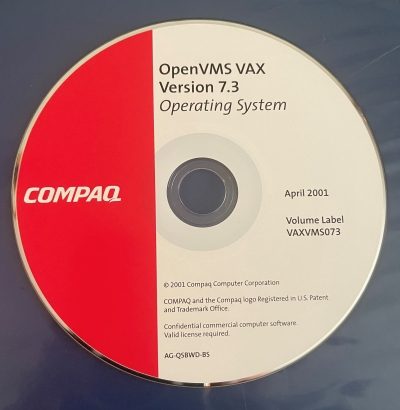Video Terminals
VT100 became the de facto standard for video terminals after its release in 1978

In 1977, OpenVMS was released by Digital Equipment Corporation (DEC) as an advanced 32-bit operating system called VAX/VMS, often referred to by its acronym VMS (Virtual Memory System). The VMS operating system is a multiuser, multitasking and multiprocessing time-sharing system, that allows the computer to expand memory through disk or other peripheral devices serving as extra memory. The history of OpenVMS is closely tied to the history of its hardware that it runs on, the VAX, Alpha, Itanium (IA-64) and eventually the x86-64 family of computers.
VMS was originally developed by DEC for its 32-bit VAX (Virtual Address eXtension) line of computers. From the beginning, VMS was known for its advanced features, robustness, and security capabilities, making it a popular choice for mission-critical applications and large-scale computing environments. DEC used it’s RSX PDP-11 operating system as the foundation for the development for VMS.
Key features of VAX/VMS included:
The VMS operating system was written by the computer’s designers to take the best advantages of the computer’s virtual-memory capabilities. As a result, the VAX hardware and VMS software work in unison to provide users with an efficient environment. In fact, the VAX included several CPU instructions that were created especially for supporting VMS command functionality for system services, file management, and queue management.
During the late 1980’s, Digital realized people ran VMS and not their VAX line of minicomputers, so they started porting the operating system to their new 64-bit RISC microprocessor known as Alpha. VMS only had a few VAX hardware dependencies that made it easy to re-platform. After VMS was ported to the Alpha microprocessor, Digital changed the name of the operating system from VMS to OpenVMS. By using the word “Open” suggests the added support for the “open systems” POSIX standard and Unix compatibility. Also, OpenVMS can interoperate with Microsoft’s Windows servers.
VAX/VMS gained popularity in the 1980s and 1990s in industries such as scientific research, engineering, and financial services. However, as DEC faced financial difficulties and the computing landscape evolved, VMS began to lose its market share to other operating systems like UNIX and Windows NT. Eventually, DEC was acquired by Compaq Computer Corporation on January 26, 1998, in what was the largest merger up to that time in the computer industry. Compaq used the acquisition to move into enterprise services and compete with IBM. Compaq struggled as a result of the merger with DEC and was acquired by Hewlett-Packard (HP) in 2002.
In 2001, prior to its acquisition by HP, Compaq announced the port of OpenVMS to the Intel Itanium 64-bit architecture. The Itanium port was the result of Compaq’s decision to discontinue future development of the Alpha architecture in favor of adopting the Itanium architecture.
In 2005, after the merger between HP and Compaq, HP released the first commercial production of its OpenVMS operating system – version 8.2 for both the Itanium and Alpha architectures (OpenVMS for Integrity Servers & OpenVMS for Alpha Servers).
OpenVMS symbolizes the refinement of an operating system over the years to emerge as a primary operating system supporting as well as advocating the age of “open-ness” in the computer industry today. While OpenVMS itself might not be as widely known for embracing open-source ideologies, its support for various programming languages, industry standards, and interoperability highlights its commitment to openness in terms of software development and integration.
Overall, the journey of OpenVMS from its 16-bit origins with the PDP-11 minicomputers through the 32-bit VAX and beyond to supporting modern 64-bit architectures is a testament to its resilience, adaptability, and the lasting impact it has had on the computer industry.
In summary, OpenVMS still works better, and is more secure, than most of the operating systems that are on the market today.
OpenVMS is organized into four layers called Kernel, Executive, Supervisor, and User level. The Kernel represents the core and the User level represents the outermost layer.

At the time, VMS v2.0 offered the largest array of computer languages on one system including BASIC, FORTRAN, COBOL-74, PASCAL, PL/I, CORAL 66, BLISS-32, and Datatrieve.
